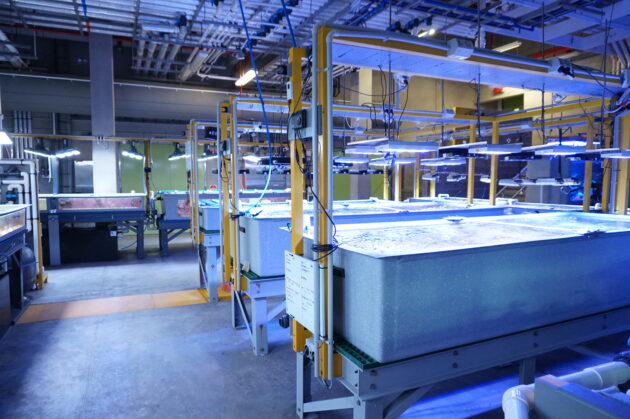
I/O system supports research on the Great Barrier Reef
By DE Staff
Automation General Sustainability Great Barrier Reef I/O WeidmullerThere have been massive coral die-offs at the Great Barrier Reef on Australia’s eastern coast in recent years. To prevent further coral loss and prevent ongoing damage to the reef, the Australian Institute of Marine Science (AIMS) is working to understand the two biggest drivers behind this phenomenon: climate change and crown of thorns starfish outbreaks.
The Great Barrier Reef is the largest coral reef on earth, with a surface area roughly equivalent to that of Germany. Measurements recorded over multiple decades have shown that the Reef is highly susceptible to large scale disturbances with four mass coral bleaching events occurring since 2016 leading to coral mortality.
AIMS is conducting research with the help of the National Sea Simulators (SeaSim) to get to the root of these problems. This facility is the world’s most modern research aquarium complex. Highly automated systems can be used to manipulate and monitor different parameters in each individual tank, imitating conditions found on the reef. The temperature, salinity, nutrient content, light colour, acid content and water quality can be varied and regulated as needed and depending on the scientists’ research interests.
To obtain valid research results and findings, the technology used in the aquariums has to be highly reliable and functional. The smallest change in a parameter, such as the water’s salinity, can invalidate a long-term study. This could destroy many years of research—and cause financial damages as well.

In SeaSim, the parameters must be kept constant to ensure the scientific integrity of the experiment. (Credit: Weidmüller)
Remote I/O
With u-remote, AIMS is using an I/O system that meets these high scientific requirements. The modular design of the u-remote module makes it possible to replace electronics during operation. This reduces downtimes to a minimum. In addition, plain-text diagnostics in the integrated web server facilitate error identification, so that maintenance time is significantly reduced. Thus, u-remote is suitable to be used as a standard in the aquarium’s control cabinets.
“We need a smart system for our facility,” explained Steve Green, senior controls and electrical technician with SeaSim. “It needs to be resilient, able to talk to the sensors and configurable. We have a lot of products from third-party providers.”
With eleven different protocols, Weidmüller’s I/O system can be integrated into SeaSim’s heterogeneous control landscape. u-remote is IO-Link capable in accordance with standard IEC 61131-9. The system communicates with smart sensors in the research tanks so that researchers can always stay informed of values in the testing systems.
Another key property of the u-remote that has proven very useful to AIMS is its flexibility.
“In research, we change the parameters for different experiments. The I/O system is a product that would allow us to easily modify the parameters,” Green says. The inputs and outputs on the u-remote can be configured at any time. A web server is provided for this purpose and pre-installed into every fieldbus coupler. It can be accessed using a standard web browser via the Ethernet network or the integrated USB interface by entering the IP address. Then, the modules installed in the system and their current process data are displayed correctly to AIMS in the browser. The institution can reconfigure the individual inputs and outputs online with just one click. The installation can then be saved and transferred to other stations as a standard.
This saves the institution time and ensures a uniform configuration for all tanks involved in the experiment; the error rates when setting up new parameterisations are also reduced.
AIMS has gained a lot of new insight over the years. Through long-term experiments involving crown of thorns starfish, the institution has been able to assist Reef managers with data to better understand the outbreaks, identify the causes and develop innovative tools to help control their numbers to actively protect reefs.
